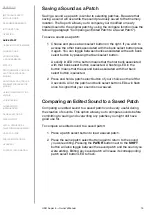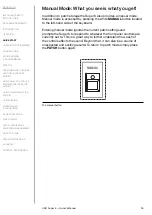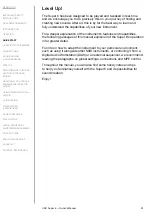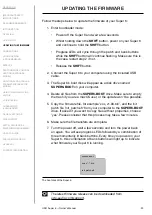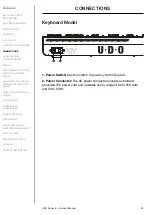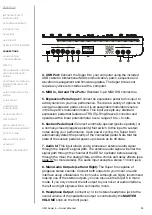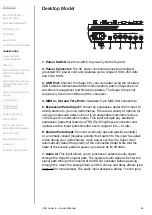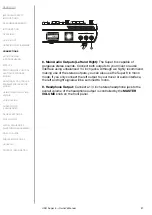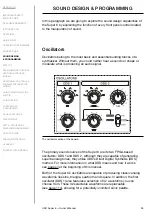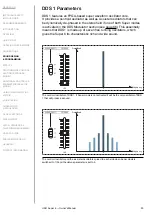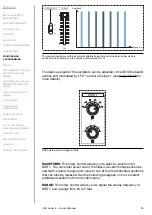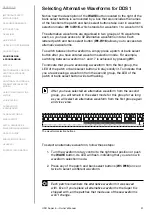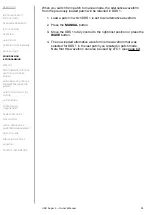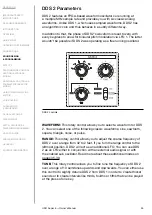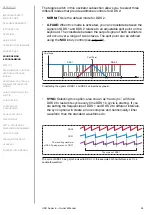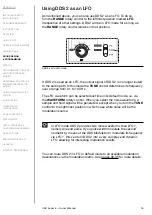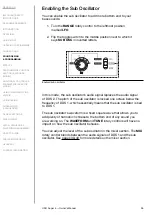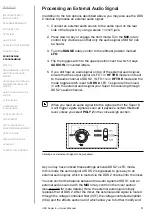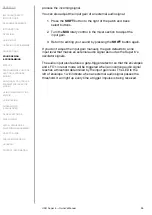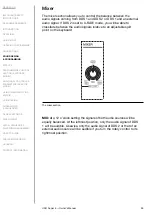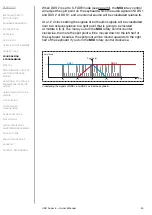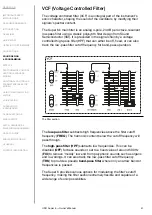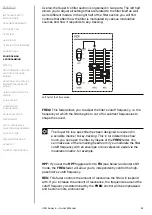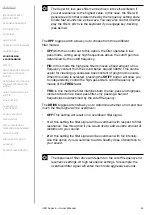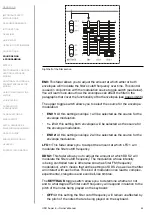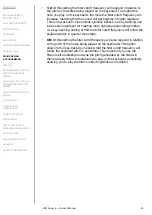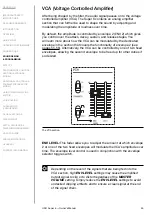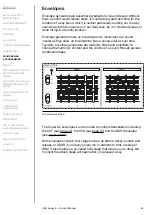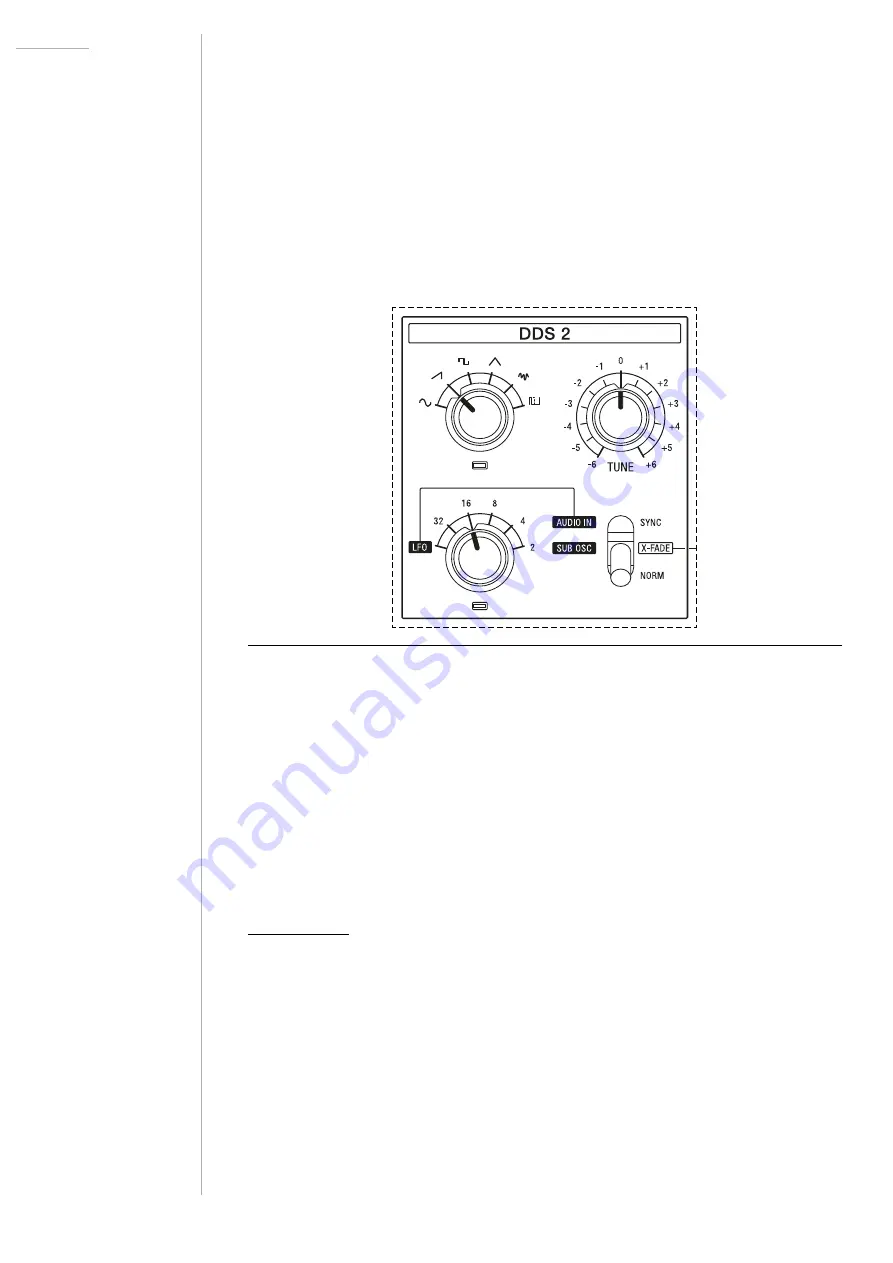
UDO Super 6 — Owner’s Manual
33
DDS 2 Parameters
DDS 2 features an FPGA-based waveform oscillator core running at
a multiple MHz sample rate and provides you with six classic analog
waveforms. Unlike DDS 1, which uses sampled waveforms, DDS 2 has
an algorithmic core and thus behaves in a subtly different way.
In addition to that, the phase of DDS 2’s waveform is reset to zero with
every keypress to allow for binaural pitch modulation via LFO 1. The latter
wouldn’t be possible if DDS 2 was operating as a free running oscillator.
DDS 2 controls.
WAVEFORM:
This rotary control allows you to select a waveform for DDS
2. You can select one of the following classic waveforms: sine, sawtooth,
square, triangle, noise, or pulse.
RANGE:
This rotary control allows you to adjust the coarse frequency of
DDS 2 over a range from 32 to 2 feet. If you turn the range control to the
leftmost position, DDS 2 will act as an additional LFO. You can use DDS
2 as an LFO either in conjunction with an external audio signal or with
the enabled sub oscillator. Read more about these additional modes on
TUNE: This rotary control allows you to fine tune the frequency of DDS 2
over a range of 10 semitones upwards and downwards. You can either use
this control to slightly detune DDS 2 from DDS 1 in order to create thicker
sounds or to create intervals like thirds, fourths or fifths that can be played
at the press of one key.
Summary of Contents for SUPER 6
Page 142: ......

